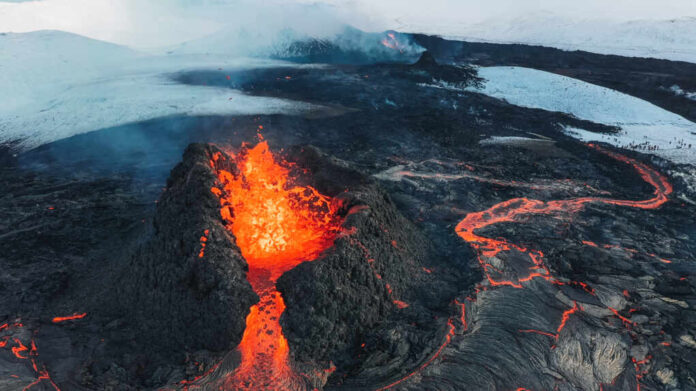
What’s got Icelandic volcanologists worried? Some of the island’s most dangerous volcanoes are rumbling back to life after decades of slumber.
Iceland’s smoldering giants, including the infamous Katla and Hekla volcanoes, have been showing signs of reawakening in recent months. Increased seismic activity, ground inflation, and other signals indicate pressure building up in the volcanoes’ magma chambers, like steam in a pressure cooker.
While not signaling an imminent eruption, the marked increase in seismic activity is emanating from volcanoes with histories of massive eruptions. This has Icelandic scientists on high alert. “The intensifying unrest is something we need to keep a very close eye on,” said Dr. Freysteinn Sigmundsson, a vulcanologist at the University of Iceland.
Katla, nestled under Iceland’s Mýrdalsjökull glacier, last exploded in a fiery rage over a century ago, unleashing devastating flooding from the melting glacier. Now, Katla has shown its most seismic rumblings since the 1990s. But will history repeat itself?
To Katla’s east, Hekla volcano simmers. One of Iceland’s most active volcanoes, Hekla, has erupted roughly 20 times over the past thousand years. Though its last eruption was in 2000, sensors have recently detected the concerning inflation of the volcano.
Further inland, the Askja volcano has also exhibited increased seismicity after decades of quietude. Askja sits within a caldera surrounded by Iceland’s remote interior highlands. A major blast at Askja could spark enormous ash clouds that disrupt aviation, as occurred during 2010’s Eyjafjallajökull eruption, when trans-Atlantic flights were grounded for weeks.
Of course, volcanoes tend to keep their own schedules. “While we cannot say with certainty that any of these volcanoes will erupt, further research and monitoring is critical,” explained Dr. Sigmundsson. Still, authorities have already raised alert levels as a precaution.
A Volcanic Eruption is Imminent in Iceland; Magma is Underneath a Town &… https://t.co/YdwUkBG5BW via @YouTube #iceland #icelandvolcano #volcano #eruption #geology #science
— GeologyHub (@HubGeology) November 12, 2023
Icelanders are no strangers to their volatile underground neighbors. After surviving many past eruptions, they are working to increase preparedness, from contingency plans to flood defenses to surveillance systems.
The world watches Iceland’s awakening giants closely, knowing the far-reaching impacts the volcanoes’ next outburst could have on Iceland and beyond. For now, the fires smoldering under Iceland serve as a reminder of the threat always lurking below.



























